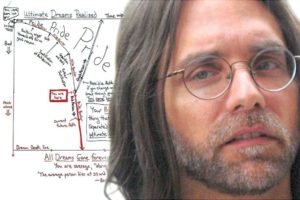In Part 3, we’ll look at the controversy surrounding Hubbard’s departure and travel back to the United States from Brisbane, Australia, using some of the same previously cited sources from Parts 1 and 2 along with public records, such as those of the Naval Air Transport Service (NATS) and the Pan American Airways archive held by the University of Miami. I want to especially thank Jeffrey Augustine for laying much of the groundwork as to possible avenues for Hubbard’s travel home, specifically in response to Margaret Lake’s assertions as to this timeframe on her Scientology Myths blog. Ms. Lake attempts to demonstrate that much of Hubbard’s narrative about his return home from Australia is essentially true, and we’ll be rigorously challenging her claims as to the veracity of Hubbard’s narrative.
In researching her claims, I have come across empirical evidence that negates much of her argument, specifically the timeline of his return, his having called upon Secretary of the Navy Frank Knox to facilitate his return and his having used a Pan American Clipper for the entire journey to the United States. A major point of contention is where Hubbard was in the 14 days in between his departure from Brisbane on March 9th, and his arrival in San Francisco on March 23rd. I will provide a detailed examination of this timeframe, as well as show how Hubbard used duplicity, in the form of forged official orders, to steal a seat on a Clipper to fly home from Honolulu.
What emerges from my work is a hybrid narrative that like many of Hubbard’s stories, narratives and anecdotes, reflects some truth among the many lies. This particular series of events is important in Hubbard’s mythology. By debunking the veracity of Hubbard’s tale here, we are also debunking the very foundations of Scientology. Like his fanciful narrative of espionage on Java and saving Australia, his homeward-bound odyssey reflects his hubris and predisposition to constantly exceed his authority. More sinisterly, it shows his selfishness and cowardice, as in falsifying orders to return home from Honolulu via air, he undoubtedly bumped a more deserving fellow serviceman, or worse, a military dependent or other, more worthy passenger, as well as avoiding a potentially hazardous journey by ship.
It’s clear from Part 2 in our series that Hubbard’s brief time in Australia was a disaster, and certainly a far cry from both his and Scientology’s narrative of his single handedly saving our Antipodean allies from the ravages of Imperial Japan. If anything, the record demonstrates that he was considered a self-aggrandizing nuisance incapable of executing the few tasks he was given; his response to charges of incompetence reflects what would be a pattern throughout his life, wherein he would never admit fault or would blame others for his own failings, shirking responsibility wherever possible. Continue reading “Debunking Military Lies Part 3: Hubbard Fibs His Way Home”


